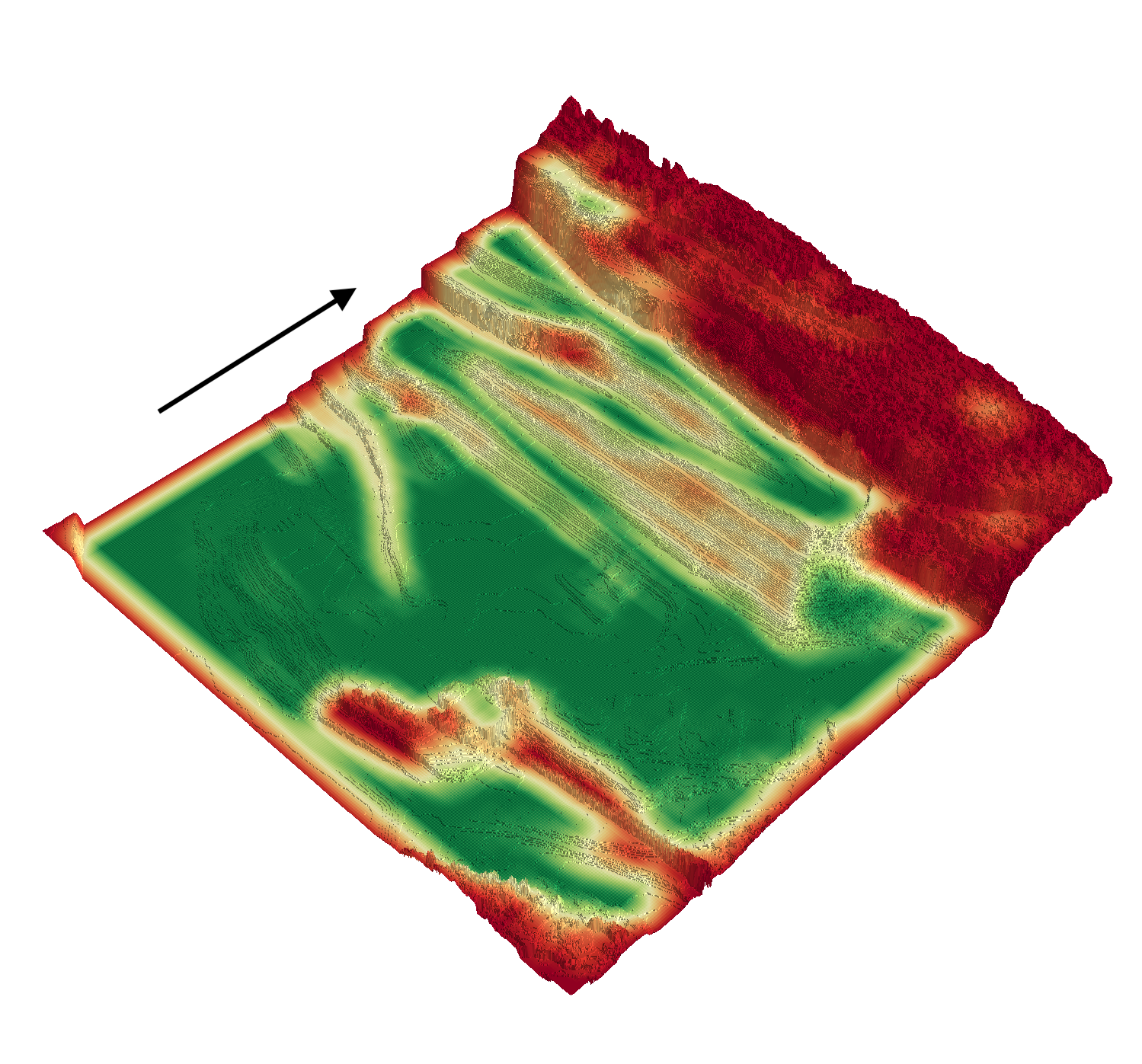Francesco Saverio Zuppichini
With this project, we estimate ground traversability for a legged crocodile-like robot. We generate different synthetic grounds and let the robot walk on them in a simulated environment to collect its interaction with the terrain. Then, we train a deep convolutional neural network using the data collected through simulation to predict wether a given ground patch can be traverse or not. Later, we highlight the strength and weakness of our method by using interpretability techniques to visualise the network's behaviour in interesting scenarios.
[WARNING] In progress
 The proposed traversability framework's main blocks in couter-clockwise order. First we generated meaningful synthetic ground, then we let the robot spawn and walk on them in simulated enviroment while storing its interactions. Later, we crop a region of ground, a patch, for each simulation trajectory around the robot according to its locomotion. We label those images using a defined treshold and fit a deep convolutional neural network to predict traversability.
The proposed traversability framework's main blocks in couter-clockwise order. First we generated meaningful synthetic ground, then we let the robot spawn and walk on them in simulated enviroment while storing its interactions. Later, we crop a region of ground, a patch, for each simulation trajectory around the robot according to its locomotion. We label those images using a defined treshold and fit a deep convolutional neural network to predict traversability.
 Map traversability from bottom to top (up-hill) for the Krock robot. The greaner the traversable
Map traversability from bottom to top (up-hill) for the Krock robot. The greaner the traversable
 Krock
Krock
Deprecated
.
├── blender // Scripts used to creat the 3d visualization in blenders
├── Config.py
├── docker
├── docker-compose-webots.yml
├── docker-compose.yml
├── estimators
│ ├── callbacks.py
│ ├── datasets // Custom dataset to properly preprocess the data in Pytorch
│ ├── inference.py
│ ├── models
│ ├── README.md
│ ├── test.py
│ ├── train.py
│ ├── utils.py
│ ├── visualise.ipynb
│ └── visualise.py
├── example.ipynb
├── images
│ └── bars1_krock.jpg
├── __init__.py
├── maps
├── notebooks
├── nvidia-docker-compose.yml
├── playground.py
├── protocols // proctols shared across different packages
├── README.md
├── requirements.txt
├── simulation
│ ├── agent
│ │ ├── Agent.py
│ │ ├── callbacks
│ │ └── RospyAgent.py
│ ├── block.py
│ ├── env
│ │ ├── conditions
│ │ ├── spawn
│ │ └── webots
│ └── Simulation.py
├── utilities
│ ├── fix_bag_image_path.py
│ ├── History.py
│ ├── patches // API to create custom patches with different obstacles
│ ├── pipeline.py // API to create custom Pipeline
│ ├── postprocessing // Package to post process the data in order to extract all the patches
│ ├── visualisation // Package to visualize a dataset
│ └── webots2ros // API to easily work with ROS in webots
└── visualization.ipynb
Each package as its own documentation and examples.
Final results with a our MicroResNet

=======
afcc9c97959834131b01157c2df04d1525801b6e